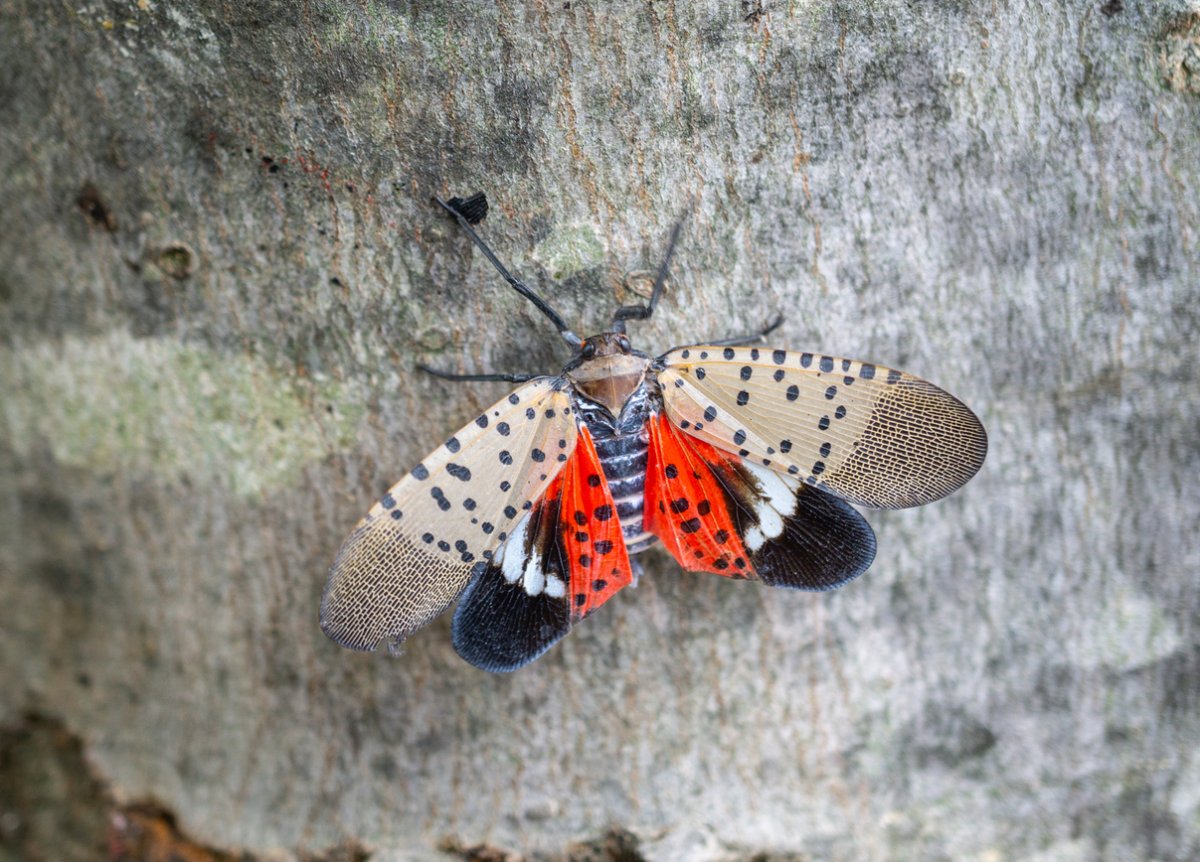

We may earn revenue from the products available on this page and participate in affiliate programs. Learn More ›
First detected in the United States in 2014, the spotted lanternfly (Lycorma delicatula) has made its way from Pennsylvania across the East Coast and, with isolated reports cropping up in Ohio, Utah, Kansas, California, and Oregon, is now a risk to vegetation in nearly every state.
Strategies to combat spotted lanternfly (SLF) are ongoing; in North Carolina and Oregon, dogs have been trained by the USDA to sniff out the invasive insects. But what can homeowners without detector dogs do to protect themselves from SLF? Early detection—namely, identifying and eradicating spotted lanternfly egg masses before they hatch this spring—is your best defense. The USDA, state extension offices, and Kathy Glassey, director of renewable resources for Monster Tree Service, offer expert tips and advice on how to prevent damage to and care for plants in the face of the spotted lanternfly.
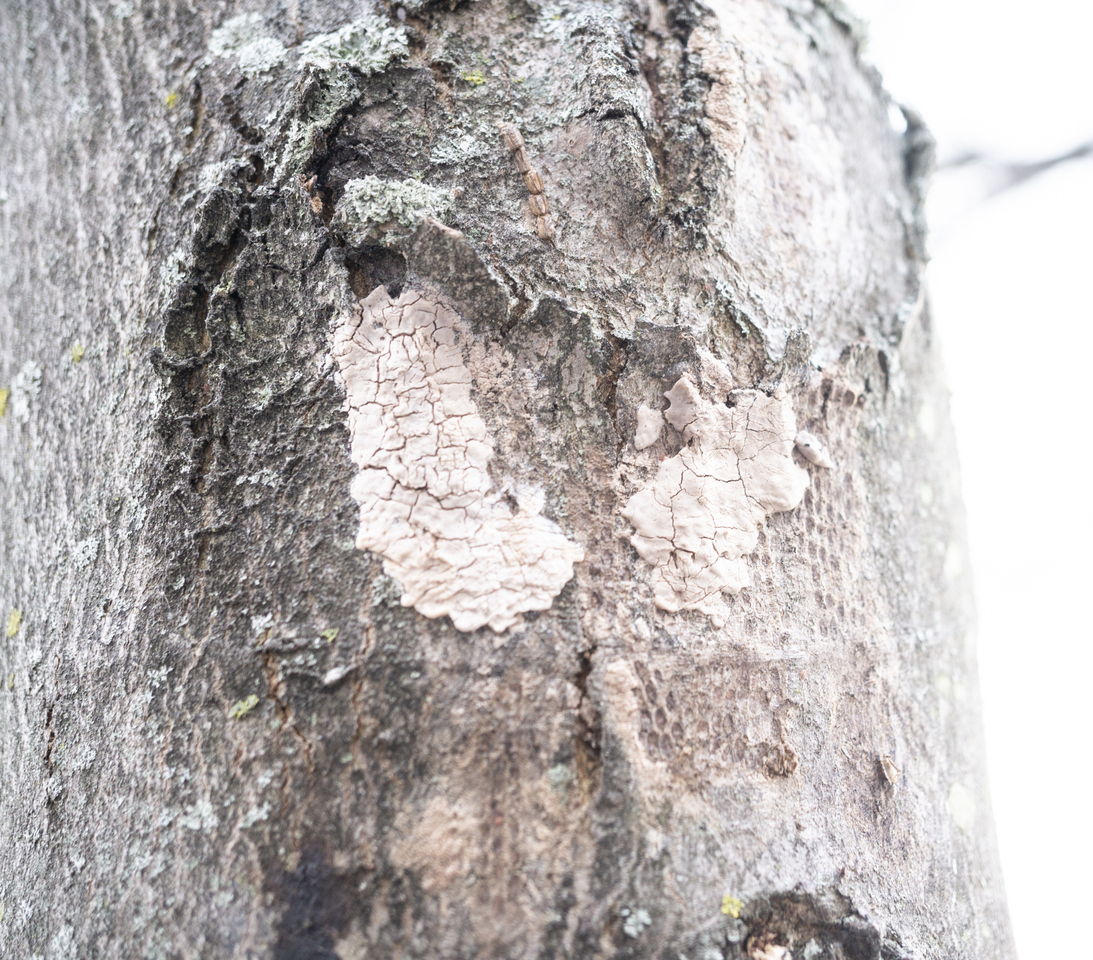
What Do Spotted Lanternfly Eggs Look Like?
Egg masses can be found on any vertical surface and look like a 1½-inch smear of mud or clay (see above). Females lay the eggs in rows before covering them with a protective layer that starts out glossy white but fades to a mud color and develops cracks. Although it seems like they can’t fly (or more accurately, hop) very far, the insect lays eggs on vehicles, firewood, and other objects that travel more freely, helping to speed the spread.
How to Destroy Spotted Lanternfly Eggs
The pest can be destroyed throughout its various instars, or growth periods, but “if egg masses are found, they can be scraped with a card and destroyed,” says Glassey. Scrape them into a Ziploc bag, add enough hand sanitizer to cover them, then zip the bag shut and dispose of it. Other ways to destroy the eggs are to smash them with a stick (or your hand), as long as you apply enough pressure to burst all of the individual eggs.
As you’re cleaning your deck and patio this spring (and closing it down again in the fall), it’s a good idea to check all outdoor furniture and decor—including grills, patio furniture, and garden planters—for egg masses. Regularly checking trees and plants for signs of spotted lanternfly eggs or damage is important for anyone living in an area where the pest already is deemed a threat or where the potential exists. Be sure to report your sighting to your local agriculture office as well.
RELATED: Spotted Lanternfly Eggs Are Hatching Soon—Here’s What You Should Do
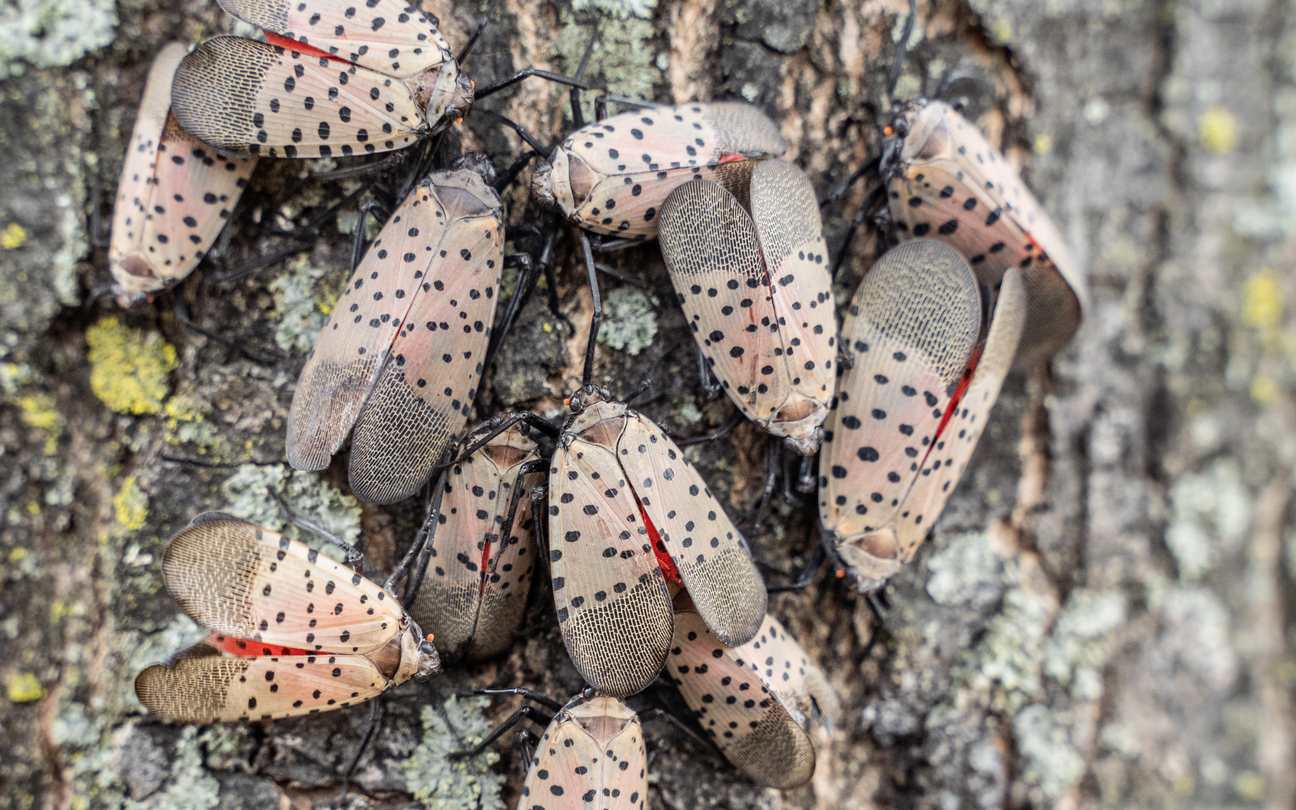
What Is a Spotted Lanternfly, Exactly?
The spotted lanternfly is a planthopper that originated in northern China. The adults have four wings. The front wings are grayish and have dark spots, and the back wings are black-tipped, white in the center, and bright red near the body. SLF females are 24 to 27 millimeters long, while males measure 21 to 22 millimeters.
Though it sounds from their description like the SLF would be fairly easy to spot, the insect undergoes five stages of instars, in which they look entirely different. The spotted lanternfly life cycle begins around August to early November, when the insects lay eggs. The eggs overwinter, and hatch in late spring—usually around May. The insects are relatively small, and are often confused with ticks during their first through third instars.
“You can see these stages from about May through July,” says Glassey, “The fourth instar nymph has the first distinctive red color.” By late summer, the insect has reached its adulthood and congregates on trees. “The adults do not fly in the traditional sense,” explains Glassey, “but rather hop and glide.”
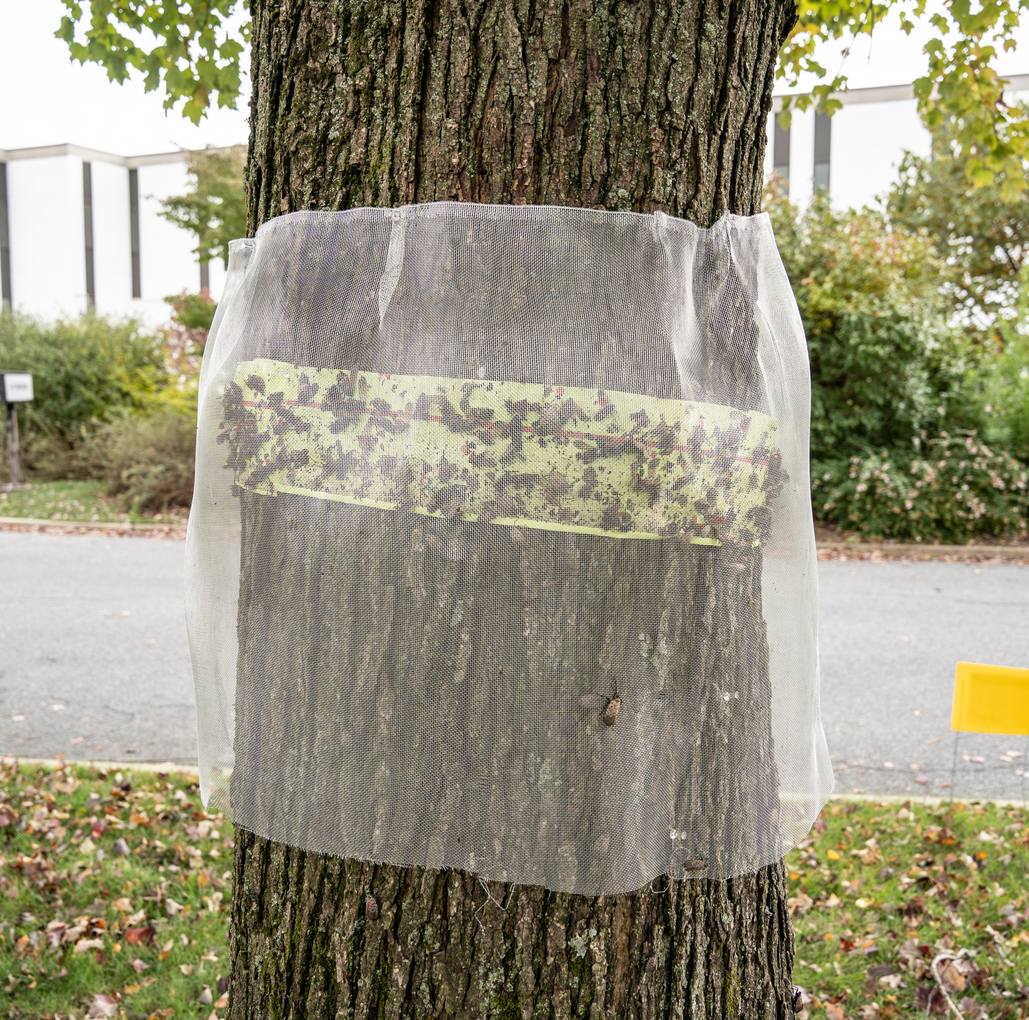
How Did the Spotted Lanternfly Get to the U.S.?
The SLF’s native range includes China, India, and Vietnam. It was first reported outside these countries in South Korea in 1932 and has since become abundant in Korea and Japan. The insect arrived in Berks County, Pennsylvania, via an overseas shipment in 2014 and has since spread through other states.
“Global commerce has created transportation opportunities for invasive pests to hitchhike and become introduced to new regions not exposed previously,” says Glassey. “The spotted lanternfly is a great hitchhiker and can travel along railroads or on cars, maybe even up to 60 miles per hour.”
Where Has the SLF Spread?
In addition to Pennsylvania, the SLF is considered a threat in Connecticut, Delaware, Indiana, Maryland, Massachusetts, New Jersey, New York, Ohio, Virginia, and West Virginia. Although some states’ conditions are less suitable for the insect to take hold, most have at least one area with some risk based on local climate.
The risk is highest across the northeastern states where it’s already a threat, along with parts of California, Oregon, and Washington. In February 2023, sightings or infestations around the Northeast had been reported as far west as Indiana and southeastern Michigan, and as far south as the Carolinas. In 2021, the state of California established quarantine measures to prevent the insect from entering the state from infested areas; without these measures, it was predicted that the insect would be established in the state by 2033.
Just like how they hitchhike on global transports, these prolific pests can travel throughout the United States on nearly any wood product, vehicle, or commodity. The insect is considered an invasive species in the United States and South Korea.
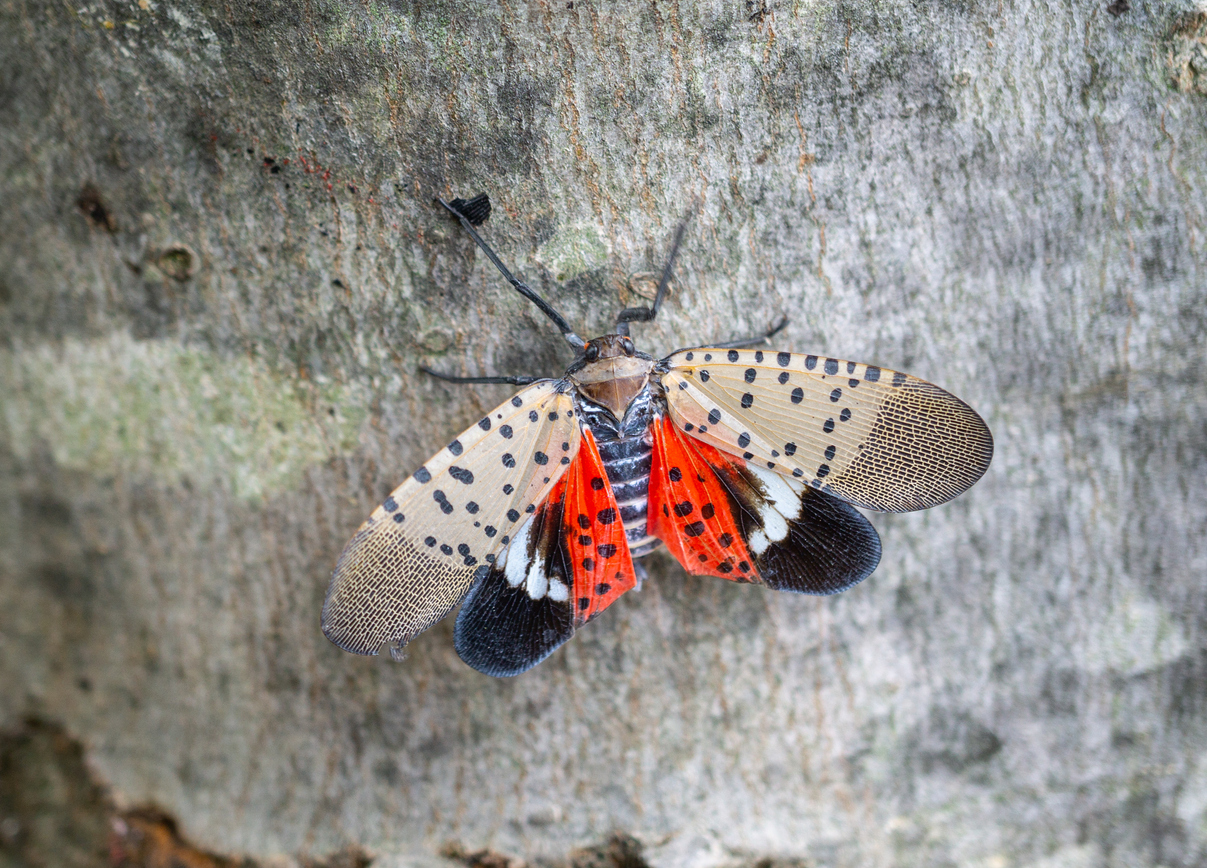
What Type of Damage Does the SLF Do?
The spotted lanternfly can be found on nearly 100 species of plants, especially trees with smooth bark. They feed on sap in the phloem, the living tissue in vascular plants, which causes the trees stress and eventual decline. As they feed, SLFs excrete honeydew, a sugar-rich sticky liquid. Honeydew buildup promotes fungal, sooty mold to grow on the plant’s surface. The mold grows in black mats, interrupting the host plant’s ability to photosynthesize by blocking sunlight from the leaves’ surfaces. The honeydew also attracts other insects that can damage the plant.
The honeydew also doubles as the SLF’s breeding ground. “Adult females lay egg masses that, on average, can contain 30 to 50 eggs,” explains Glassey, “These egg masses have been found in many places, including trees, tires, patio furniture, decks, fencing, and so much more.”
The pest is particularly detrimental to grapes, apples, oaks, maples, and walnuts. They cause extensive damage to the logging, wine, and orchard industries, to name a few. “It is critical to continue eradicating this pest,” warns Glassey, “as it presents a significant economic impact on our nation’s resources.”
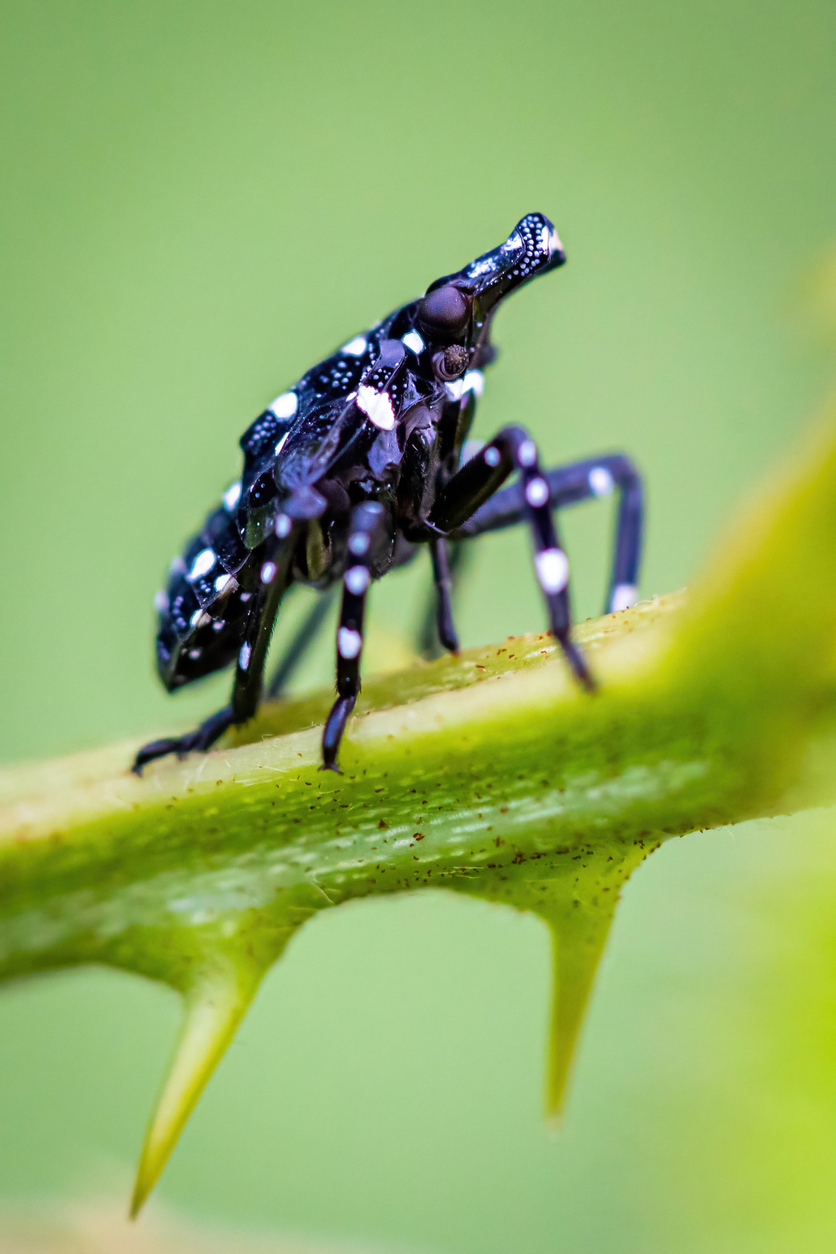
How to Fight a Spotted Lanternfly Infestation at Home
The insects tend to gather at dusk or nighttime, and might be easier to spot at that time of day. Catching nymph or adult SLFs is challenging because they are mobile. As with any pest control strategy, first try preventive measures, like destroying eggs. If prevention fails, try the least toxic remedies, escalating to insecticides as a last resort. Research effective biopesticides that can destroy spotted lanternflies without harming beneficial insects.
- Sticky traps might hold them until you can dispose of them.
- Less-toxic choices such as oils and soaps also can be effective.
- Spraying spotted lanternfly with insecticide can be effective if you can catch them gathering. EPA-registered chemicals that work on contact or systemically include dinotefuran, bifenthrin, zeta-cypermethrin, and carbaryl.
- “If traveling through or if you live in a confirmed SLF area, be sure you have no hitchhikers traveling with you,” Glassey says. “Follow your state’s quarantine guidelines and consider hiring a professional arborist to evaluate and provide treatment options.”
- If you have an Ailanthus altissima (or tree of heaven, an invasive tree and noxious weed) on your property, you may want to get rid of it. “SLF prefers this invasive tree species,” explains Glassey. Removing these trees from your property may keep the SLF from entering your landscape in the first place. To be on the safe side, have a professional inspect your trees and shrubs yearly to ensure early detection.
